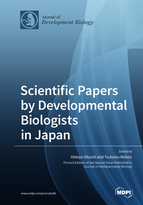Scientific Papers by Developmental Biologists in Japan
A special issue of Journal of Developmental Biology (ISSN 2221-3759).
Deadline for manuscript submissions: closed (30 June 2022) | Viewed by 30740
Special Issue Editors
Interests: histology; developmental biology; regenerative medicine and biology; molecular biology
Interests: musculoskeletal regeneration; limb development; Wnt signaling; microRNA; osteogenesis; myogenesis
Special Issue Information
Dear Colleagues,
The Special Issue "Scientific Papers by Developmental Biologists in Japan" represents a collection of high-quality review articles, research articles and communications on the development of multicellular organisms at the molecule, cell, tissue, organ, and whole organism levels, submitted by the developmental biologists working in Japan. By representing different areas of research on developmental biology, this Special Issue serves to expand emerging fields in developmental biology, focusing on the specific topic from the relevant laboratories in Japan. We kindly encourage our colleagues involved in all fields of developmental biology to make contributions to this Special Issue.
Prof. Dr. Hideyo Ohuchi
Prof. Dr. Tsutomu Nohno
Guest Editors
Manuscript Submission Information
Manuscripts should be submitted online at www.mdpi.com by registering and logging in to this website. Once you are registered, click here to go to the submission form. Manuscripts can be submitted until the deadline. All submissions that pass pre-check are peer-reviewed. Accepted papers will be published continuously in the journal (as soon as accepted) and will be listed together on the special issue website. Research articles, review articles as well as short communications are invited. For planned papers, a title and short abstract (about 100 words) can be sent to the Editorial Office for announcement on this website.
Submitted manuscripts should not have been published previously, nor be under consideration for publication elsewhere (except conference proceedings papers). All manuscripts are thoroughly refereed through a single-blind peer-review process. A guide for authors and other relevant information for submission of manuscripts is available on the Instructions for Authors page. Journal of Developmental Biology is an international peer-reviewed open access quarterly journal published by MDPI.
Please visit the Instructions for Authors page before submitting a manuscript. The Article Processing Charge (APC) for publication in this open access journal is 1800 CHF (Swiss Francs). Submitted papers should be well formatted and use good English. Authors may use MDPI's English editing service prior to publication or during author revisions.
Keywords
- cell differentiation
- embryonic development
- organogenesis
- developmental mechanism
- developmental disorders
- developmental biology in Japan








